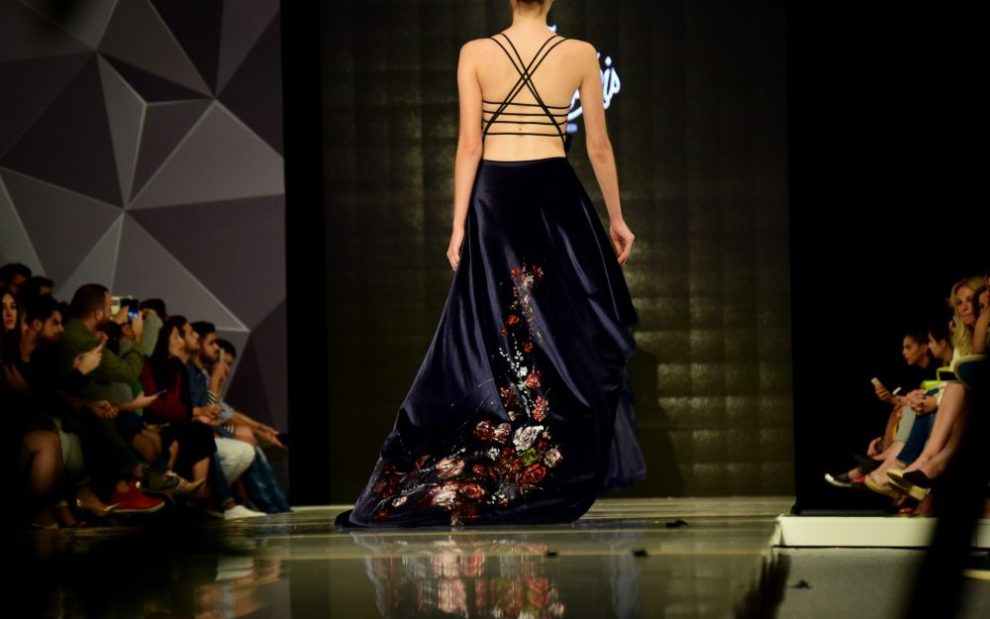On May 1, the 2023 Met Gala commenced. The annual fundraising gala, which is held at the Metropolitan Museum of Art in Manhattan, is viewed as the most prestigious fashion event globally. The Met Gala is a sight to behold: Its exclusive, celebrity guest list and striking red carpet looks heighten public interest and intrigue.
And though it’s a secular event, the Gala can and should be of interest to people of faith as it implicates human creativity in responsibility towards neighbor, creation, and God. Concerns about clothes should extend beyond modesty politics, towards other matters—like economic and environmental ethics, worker dignity, and other topics central to Catholic social teaching.
The Met Gala puts some of fashion’s finest (and wildest) garments on display, both on the red carpet and within the museum’s Costume Exhibit. Each year’s theme stretches the limits of our imaginations, joining spectacle with the spectacular. This year’s theme is “Karl Lagerfeld: A Line of Beauty,” paying homage to German designer Karl Lagerfeld, who produced stunning garments for haute couture fashion houses like Balmain, Chloé, and Chanel.
Catholicism has much to say about beauty, and much to show for it. Consider the sources of beauty in the tradition, from cathedrals to devotional art to intricate vestments. These all can, through their beauty, fill viewers with awe. And this beauty can inspire faithful devotion, too.
In 2018, the Met Gala sought to explore the beauty of the Catholic tradition. That year’s theme, “Heavenly Bodies and the Catholic Imagination,”showcased loaned vestments from the Vatican and couture gowns emulating Catholic aesthetics in the Costume Exhibit. Attendees also wore Catholic-inspired dress, some of which invited controversy.
Fashion events are often a chance for provocative expression. But when the controversy clears, what else do we see?
I remember tuning into the 2018 Gala, and while I found some of the red-carpet attire outrageous, I was also moved, as my eyes followed the couture trains of tulle and silk, gazing upon eclectic gowns that brought to mind the Sistine Chapel, saintly hagiography, and more.
Fashion, whether at the Gala or within our own wardrobes, presents an opportunity to marvel at human creativity. I am amazed by how fashion designers, dressmakers, and the innumerable hands involved in garment production can turn God’s creations, like cotton and flax plants, into creations of their own. These creations can provoke ideas about the mysteries of life, and their beauty can draw us closer to these mysteries by amplifying the splendor of creation.
In the Catholic tradition, beauty is understood as intertwined with goodness and truth, working with them in unity. So, if something is beautiful, it should draw us towards truth and goodness. We might say that this is beauty’s responsibility.
With this in mind, we have more to consider at the Met Gala than appealing aesthetics. This year’s theme invites us to consider beauty’s responsibilities. This requires that we contend with fashion’s “fruits,” and how easily they rot.
Karl Lagerfeld: Beautiful Clothes, Rotten Legacy
Consider, for instance, the legacy of Karl Lagerfeld. Within his 65-year career, Lagerfeld covered impressive ground in the fashion sphere. Early on, he established himself as one of fashion’s first freelancers. While collaborating with top fashion houses, Lagerfeld became Chanel’s chief artistic director in 1983 and launched his own eponymous label in 1984. Much of his work embodies sophisticated beauty—from taffeta dresses to sharp, wool suits to the iconic double-CC design he popularized at Chanel.
Yet Lagerfeld’s controversial reputation complicates his beautiful work. Known for his harsh tongue, he criticized female celebrities, models, and consumers for their weight and appearance. He dismissed models sharing stories of sexual harassment during the #MeToo movement and was outspoken against the rise of migrant populations in Germany. Just a few years earlier he had dressed one of his favorite models, Claudia Schiffer, in blackface and yellowface for a German magazine.
Lagerfeld’s reputation was known by his friends and admirers but glossed over. When faced with the bad behavior of talented figures, we’re often told to separate the art from the artist. We do this in crucial areas in our lives—even within the Catholic faith. If we’re happy to ignore offensive comments from a fashion mogul for the sake of aesthetic indulgence, or from a religious leader for the sake of “harmony,” what else might we ignore about the inner workings of institutions? I have some thoughts—at least about the fashion industry.
Fashion’s “Fruits”
Fashion thrives on novelty and constant change. These features crop up in everyday clothing brands, producing fast fashion, which gets its name from dizzying production cycles, where brands offer up to 52 micro-seasons. That’s new styles every week.
Lagerfeld’s repertoire might be unattainable to most—it’s unaffordable for me—but fast fashion retailers are eager to replicate runway outfits and offer affordable clones. Six years ago, I visited the Met’s 2017 Costume Exhibit on designer Rei Kawakubo. I was later delighted to find a red tulle shirt that emulated the exhibit in a nearby H&M. (H&M has created outfits for Gala attendees for nearly a decade—so it makes sense that their public offerings would hint at the runway.) So, every Gala season gives brand retailers a chance to offer eye-catching pieces for consumers worldwide. But an industry of constant change must contend with its excesses—and so should we.
In the United States, consumers throw out more than 34 billion pounds of used textiles, with 66 percent of these castoffs sent to landfill. But this isn’t simply an individual vice; corporations also destroy products, even those that are never worn. Even top designers like Burberry have been caught burning unsold stock. Discarded clothes are often shipped to various countries like Ghana and Chile, where they overwhelm local economies, communities, and ecological systems. Beautiful garments become sickening ropes of rotten fabric, washing up on beaches in Ghana. And brands are nowhere to be found.
With rampant overproduction as a given, fashion’s fruits turn rotten. In beauty’s place lies clothing gone to waste, rotting in landfills and communities across the world.
From a faith standpoint, overconsumption causes great harm to God’s creation, and these harms are overwhelmingly shouldered by economically vulnerable communities. Countries with booming garment exports, like China, India, and Bangladesh, also endure environmental injury. Production waste, from air pollutants to dyes leeching into local waterways, harm these communities and their resources.
Harms are further borne by garment makers. Industry demands they meet monstrous quotas and, to ensure that brands don’t take their business elsewhere, inflicts a litany of ills on workers, many of whom are women. Workers endure physical and sexual abuse, mandatory overtime, and wage theft. Those who are paid are paid little. Los Angeles garment workers, who produce for higher-end clients like Neiman Marcus, Nordstrom, and Dillard’s, are paid as little as $1.58 per hour.
Fashion’s beauty is tarnished amidst burgeoning overconsumption, worker exploitation, and environmental ruin. We can laud fashion’s creativity, as it reflects the splendor of God’s handiwork, but we also should think concretely about how we might be weighing down God’s creation and creatures. In the unbridled creativity of fashion, we may encounter what Pope Francis calls “the unique thirst for the infinite that defines the human being.” Clearly, this thirst has been led astray.
What could recorrect this course?
Fashion houses and fast fashion brands have turned to corporate sustainability initiatives—like recycling programs and “credentials”—to right some wrongs. Others have delivered grand gestures—fast fashion giant SHEIN has pledged $5 million to support textile waste management in Ghana. Others have signed agreements that honor garment workers’ dignity, like California’s Garment Worker Protection Act, and the International Accord. The Karl Lagerfeld brand has recruited sustainability ambassadors and is releasing sustainable collections. Previously, under Lagerfeld’s leadership, Chanel debuted a nature-themed recyclable couture collection in 2016. The Met Gala has also embraced the eco-friendly, with some attendees wearing upcycled gowns and thrifted looks.
But talk can be cheap. For example, Coach was recently caught destroying stock despite its sustainability “commitments.” And despite well-written statements and nods to diversity, fashion remains a bastion of classism, sexism, racism, and environmental ruin.
If we believe, as Pope Francis does, that true beauty is not about appearances or ornament, but springs from the root of “goodness, truth, and justice,” then we should seek these out in the creators and clothes that catch our eye. The industry should embrace this responsibility—and so should we.
Clothing enthusiasts can buy from “ethical” fashion brands or turn to thrifting. Of course, these options have their limits: not everyone can afford “slow fashion” brands, or have access to secondhand shops. What is our ultimate responsibility here?
I believe it is to recognize the beauty in responsibility—in this case, towards people and planet. True beauty should propel us towards responsible care for God’s handiwork, and accountability for harms done, whether on the runway or within the church. This year’s Met Gala unwittingly invites us to prioritize accountability in the institutions that ground our lives. The question is, will we accept this invitation?
Image: Unsplash/Rudy Issa













Add comment